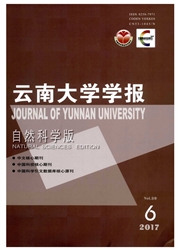

 中文摘要:
中文摘要:
臭氧是影响平流层温度变化的主要因素,作者利用NCEP的臭氧与温度的再分析资料,分析了东亚地区1979--2008年平流层各层臭氧与温度的变化趋势以及二者的相关关系.分析结果表明,平流层各层次臭氧与温度的变化趋势大致相同,有较强的相关关系.为了更好地分析二者的相关关系,进行了平流层3个层次(100、70、50hPa)欧亚大陆0,场与东亚温度场的奇异值分解(SVD)分析.结果显示,3个层次上第1奇异向量的方差贡献都达到90%以上,可见3个层次第1奇异向量对应的SVD模态是最主要的模态,代表了此两要素场相互作用的主要特征,即①欧亚大陆上西风带行星波影响区域对应的臭氧含量高,则行星波东亚大槽上空平流层温度偏高,反之则偏低;②欧亚大陆上热带东风急流区域对应的臭氧含量低,则台湾以南一南海区域上空平流层温度偏低,反之则偏高;③同时发现平流层中低层的大型经向环流在影响中一低纬地区臭氧分布的过程中起了一定作用.
 英文摘要:
英文摘要:
Ozone is the main factor that influences the temperature of stratosphere. Based on the NCEP ozone mass mixing ratio and the temperature reanalysis data during 1979-2008, the evolution trend for atmospheric o- zone and temperature in stratosphere over East Asia and their correlation have been investigated in this paper. The results show:Both ozone and temperature in different layers have the same trend, and there exits a notable correlation between them. In order to investigate the relationship, the singular value decomposition ( SVD ) method has been used to study the ozone and temperature at three layers in stratosphere,i, e. :100 hPa,70 hPa and 50 hPa. It is found that, the variance contribution of first singular vector at each layer has exceeded 90 % , which means the SVD model corresponding to the first singular vector is the dominant model, which represent the main characteristic of the interaction between the two element fields. That is, ①if the ozone content in the area of West- erlies of Eurasia increases, the temperature over the East Asia major trough of the Rossby wave rises, vice versa; ② if the ozone content over the tropical easterly jet region in Eurasia has a low level, the temperature above the South Sea and south of Taiwan will decrease;③meanwhile, we found that the large scale meridional cell in the middle -lower stratosphere would play some role in modulating the ozone distribution in middle -low latitude.
 同期刊论文项目
同期刊论文项目
 同项目期刊论文
同项目期刊论文
 期刊信息
期刊信息
